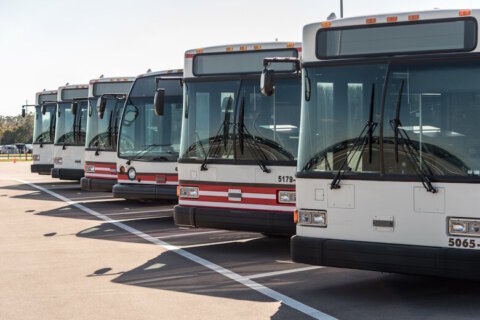At a gathering at the University of Maryland, state education leaders have been discussing the challenges of hiring and retaining teachers and administrators.
Segun Eubanks, director of the Center for Education Innovation and Improvement at the University of Maryland, told WTOP that when it comes to school systems’ ability to fully staff by the start of classes, “This year is probably going to be rough; it’s hard to imagine otherwise.”
School systems are trying to hire from a shrinking pool of teacher candidates, Eubanks said, and it’s not just because of fallout from COVID-19: “Staffing shortages are often driven by economic conditions; the better the economy is, the more options people have.”
This year, he said, educators needed to talk “a lot about the social and emotional needs of our staff, and the kind of pressures that schools have been under.”
The discussions at the School Improvement Summer Institute have also focused on what’s needed to retain staff at all levels.
“Most people who [teach] do it because they actually love it,” Eubanks said, so administrators need to provide supports to teachers so that they get “back to doing more of the work they love.”
Eubanks said educators in Maryland are also looking at the programs that create new teachers: “We have to develop better postgraduate programs, alternative prep programs; we have to do a better job at working with conditionally certified teachers who come into schools.”
Pay and workloads often come up as well. Eubanks referred to the reforms enacted by lawmakers in Annapolis in the Blueprint for Maryland’s Future, also referred to as the Kirwan Plan.
“The Maryland Blueprint calls for a minimum $60,000 annual salary for every first-year teacher, but salary inequities across districts have to do with a much deeper discussion about how schools are funded,” he said.
Teachers are not alone in feeling overwhelmed, Eubanks said; administrators and principals also need support as they handle staffing, curriculum and other school operations. While “superstars” often get bumped up to central office or posts as superintendents, school leaders who stay on the job for the long term need more support.
Equity
Eubanks said inequities influence how schools educate students at every level, and “much of it is perpetuated in the very school policies that we’re in control of, that we can do something about.”
One participant in the summit, a superintendent, “yesterday talked about an urban school district that was 80% Black, but that only 20% of the students in their magnet programs were Black.”
Eubanks said access to programs at all levels is important for students, “But access alone is only half the issue. You have to be able to support folks; you have to often teach differently.”
He added, “If you’ve been teaching AP Calculus the same way for the last 10 years, and now you’re just going to bring in a different group of students with different skill sets and a different set of experiences, and you teach it the exact same way, those students won’t see success.”
Instruction used to assume some students would be able to tackle material in the curriculum, and some simply wouldn’t, Eubanks said; now, teaching includes an emphasis on finding ways to provide the same material in different ways.
“Most of our students are perfectly capable of achieving high levels with the right support,” Eubanks said.








